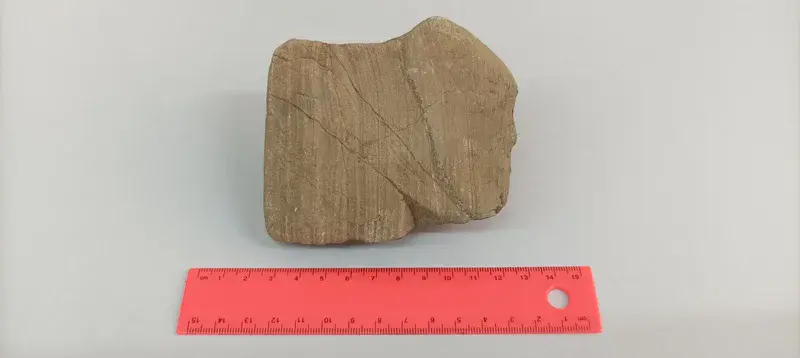
Whispers across the Mediterranean Sea
by Antonio Jordán, University of Seville, Sevilla, Spain
First, in English:
The term "flysch" has German origins and means "flow." In geology, a flysch is formed when a current carrying a large amount of sediments slides down a slope on the sea floor. This current is called a "turbidity current" and is caused by large avalanches of mud and detrital materials that can be very fast. Slowly, the friction of the sediments excavates the original surface. Due to changes in drag force (sometimes due to geological movements), the speed of the current decreases, and the sediments are deposited on the bed in layers ordered by their density and size.
In this way, flysch ends up as a series of layers formed by hard rocks (such as sandstones) and soft rocks (such as clays) sedimented over millions of years.
In the Sierra de Algeciras, there are many evidences of this process, sometimes forming spectacular landscapes on the coast (Flysch of Campo de Gibraltar). The turbidity current from North Africa (some authors place its origin on the coast of Algeria) carried the materials that sedimented in the Strait area and what is now Campo de Gibraltar.
The photograph shows a fragment of siliceous sandstone (Miocene) with grooves corresponding to the traces left by the mud current on the already solidified material.
Ahora, en español:
El término “flysch” es de origen alemán, y significa “fluir”. En geología, un flysch se forma cuando una corriente que arrastra gran cantidad de sedimentos se desliza por un talud sobre el fondo del mar. Esta corriente se llama “corriente de turbidez” y se debe a grandes avalanchas de fango y materiales detríticos que pueden ser muy rápidas. De manera lenta, el roce de los sedimentos va excavando la superficie original. Debido a cambios en la fuerza de arrastre (a veces por movimientos geológicos), la velocidad de la corriente disminuye, y los sedimentos van depositándose sobre el lecho en capas ordenadas según su densidad y tamaño.
De ese modo, el flysch acaba como una serie de estratos formados por rocas duras (como areniscas) y blandas (como arcillas) sedimentadas a lo largo de millones de años.
En la Sierra de Algeciras existen muchas evidencias de este proceso, conformando a veces paisajes espectaculares en la costa (Flysch del Campo de Gibraltar). La corriente de turbidez del Norte de África (algunos autores sitúan el origen en la costa de Argelia) arrastró los materiales que sedimentaron en la zona del Estrecho y lo que hoy es el Campo de Gibraltar.
Categories
- Geomorphology (1404)
- Interdisciplinary/Other (841)
- Soil System Sciences (957)
- Stratigraphy, Sedimentology and Palaeontology (529)
Location
- Europe (3885)
- Southern Europe (1685)
- Spain (813)
- Exact location (-5.7938 W, 36.1025 N)
Tags
- mediterranean soils (267)
- mediterranean (14)
- rock (50)
- sediment transport (4)
- sediment erosion (5)
- sedimentary rocks (49)
- flysch (9)
- mediterranean sea (13)
Colours
Image properties
4000 × 1792 px;
image/jpeg; 523.7 KB
Taken on 8
October
2023
Submitted on 8 October 2023
Licence
Creative Commons Attribution-ShareAlike 3.0 Unported (CC BY-SA 3.0)
Credit
Antonio Jordán (distributed via imaggeo.egu.eu)
Share
Appreciate
Report